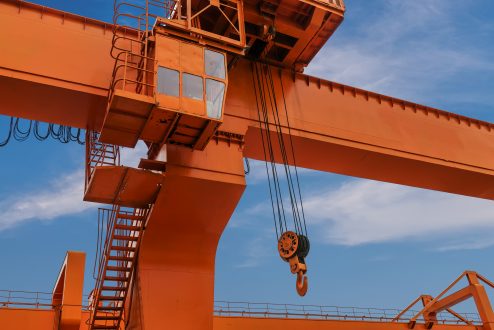How dangerous are cranes really?
Construction, demolition and manufacturing companies all over the world rely on cranes to transport and lift materials and goods.
Crane systems are safe, easy to use and very efficient, but only when expertly installed and used by properly trained, competent people.
However, when something goes wrong, the results can be catastrophic. Two recent, high-profile crane collapses in Melbourne and the Netherlands have bought the question of crane safety to the forefront of many minds.
The Three Main Hazards
There are many risks associated with the use of cranes, but three major concerns that must always be considered when using cranes for commercial purposes are:
- Electrical hazards
- Overloading
- Materials falling
The one overriding factor that can help to reduce, or even completely eliminate these hazards is the experience and competency of the crane operator. With sufficient training and planning the operator can assess and identify any potential risks with each operation, and ensure the movement is carried out safely.
Electrical Hazards
Many accidents involving cranes occur because the machinery comes into contact with an overhead power source. This can result in anyone in contact with the crane being electrocuted, but the risk can extend to anyone in the area.
In the US alone, almost 200 people a year die in accidents just like this, and although mostly the fatalities are people who are directly involved with operating or directing the crane, it can be anyone on the site.
These accidents commonly occur because of a lack of planning that results in hazards, such as overhead power lines, not being identified and guarded against.
Power cables will have a safe clearance zone, and if your crane, or work equipment, is capable of reaching into this zone, they should be excluded from the area. If this is unavoidable, the site manager should arrange for the cables to be diverted for the duration of the work or the crane should be modified with a suitable physical restraints, to ensure it can not reach into the safe clearance area.
Overloading
Around 80% of all cranes accidents are caused by overloading the safe working capacity of the equipment. Many cranes have safety devices inbuilt to stop this from happening, but this is not the case for all cranes, or all the features on the cranes. For example, overhead cranes in warehouses or factories are usually attached to a building that will not have the same safety devices or weight capacity.
When a crane is overloaded, it is put under excessive stress that can cause damage to the equipment. This damage can result in a collapse of the crane. Overloading can also cause the load to swing or drop suddenly, and knock the crane off balance that would result in the entire crane tipping over.
It is essential that the cranes operators know the weight capacity of the crane they are operating and the true weight of the load. They must also understand the hazards related to overloading, or unevenly loading the crane. If there is a risk that the load is too heavy, they should have the authority to halt the operation until a safe working process can be established.
Materials Falling
In any workplace where tasks are carried out overhead, falling materials and tools present a major hazard. Whether these tasks are being carried out from a ladder, forklift, scaffold or a crane – the risk of materials falling on to a person working or passing by below must be addressed and protected against.
With cranes this risk is increased because of the excessive weight being moved, and the number of factors that could result in a fall. These include:
- Visual impairment
- Mechanical failure
- Hoist failure
- Operator incompetency
- Overloading
- Weather conditions
- Unsecured loads
Not only can falling materials cause serious and fatal injuries, the machinery and rigging can trap and crush workers, and the falling loads or collapsing crane can cause major damage to property and nearby equipment.
Steps that can be taken to reduce the risk of falling equipment, include:
Regular maintenance: Ensure the equipment and all of the rigging, hoists and slings, as well as any attachments are properly serviced and maintained. Also ensuring the weight capacity of the crane and attachments are adhered to.
Trained, competent operators: Ensure that the operators are fully trained in the use of the crane, understand the safety precautions and planning procedures, and are aware and uphold the legal restrictions that affect their work.
Careful planning and preparation: Ensure the operations of the crane are all properly planned in advance, taking into consideration all identified risks. The procedure must be communicated to all those involved with the movement.
Health and Safety Training Ltd have been providing instruction for crane operators for many years, and can tailor courses to suit the individual requirements of job. Training is comprehensive and will cover all of the current health and safety regulations, as well as slinging and operating signals and different methods of extending reach. Get in touch today to find out more or discuss your training requirements.
How to Avoid Exposure to Silica Construction sector sees sustained growth






